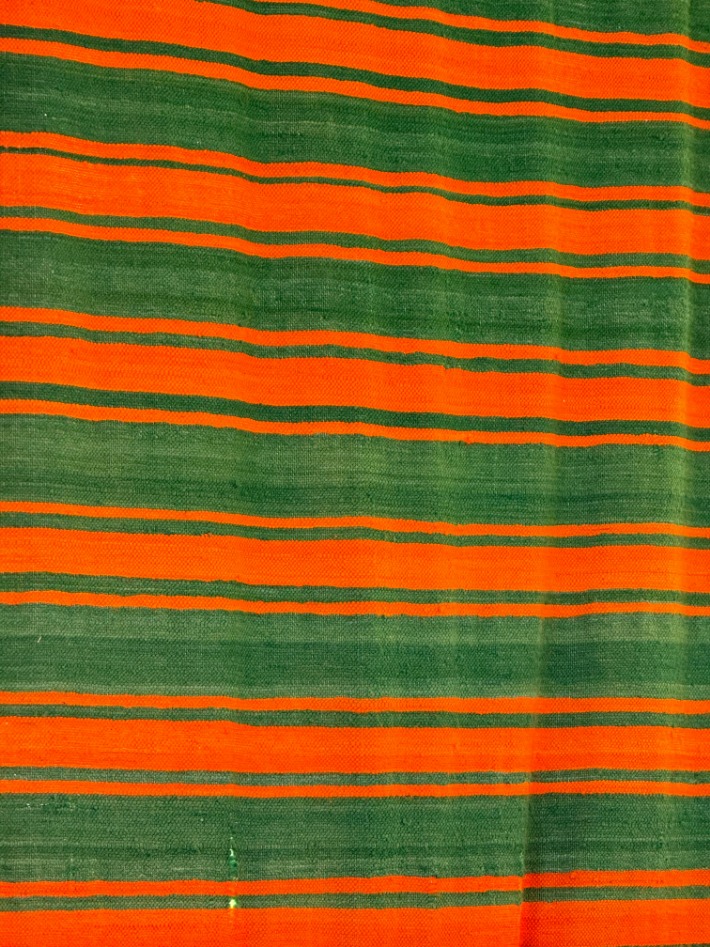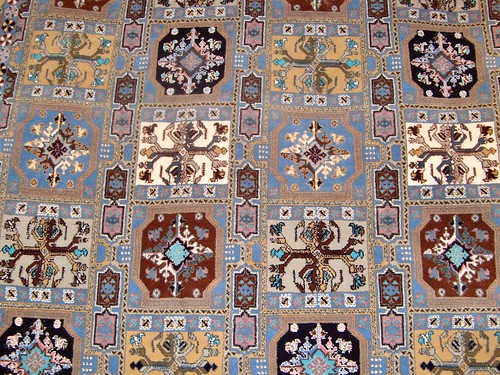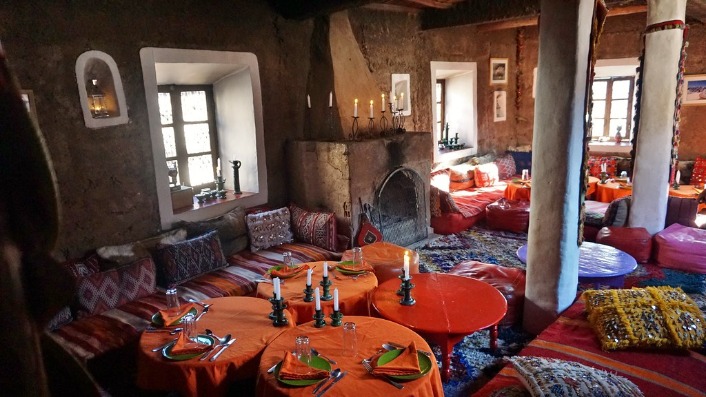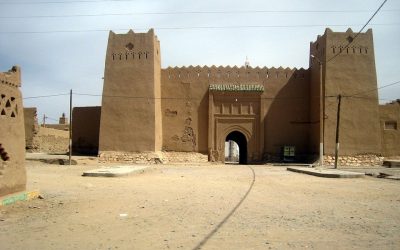History of Moroccan Carpets
Moroccan carpets have a rich and ancient history that dates back centuries, reflecting the diverse cultures and craftsmanship of the regions across Morocco. These textiles are renowned for their vibrant colors, intricate patterns, and unique techniques that have been passed down through generations. Often woven by nomadic tribes and local artisans, Moroccan carpets serve not only as functional items but also as treasured pieces of cultural expression and artistry, embodying the history and traditions of Moroccan society.
Origins and Cultural Significance
The history of Moroccan carpets dates back centuries and is deeply rooted in the country’s rich cultural heritage. These textiles are renowned for their intricate designs, vibrant colors, and symbolic patterns that reflect the diverse tribes and regions of Morocco. Traditionally handmade by artisans using natural dyes and wool, Moroccan carpets have served both functional and ceremonial purposes throughout history.
Origins of Moroccan carpets can be traced to the various Berber tribes and Arab influences that have inhabited the region. Each tribe developed its unique weaving techniques and motifs, often incorporating spiritual and cultural symbolism into their textiles. The Berber carpets, in particular, are distinguished by their bold geometric shapes and earthy colors, representing elements of nature and tribal stories.
Culturally, Moroccan carpets hold significant importance as expressions of identity, status, and tradition. They are used in everyday life for furnishing homes, as prayer rugs, and during important rituals and celebrations. The craftsmanship involved in making these carpets has been passed down through generations, preserving ancient techniques and cultural narratives. Today, Moroccan carpets continue to be celebrated worldwide for their artistry and cultural significance, embodying the country’s vibrant history and diverse heritage.
Historical Development and Traditions
Moroccan carpets boast a rich history rooted in the country’s diverse cultural and tribal traditions, reflecting a blend of ancient artistry and practical craftsmanship. These carpets have been woven for centuries, serving both functional purposes and as symbols of cultural identity. Each region in Morocco has contributed unique patterns, motifs, and techniques, creating a vibrant tapestry of regional styles.
The historical development of Moroccan carpets can be traced back to the Berber tribes, who are credited with developing some of the earliest weaving practices. Traditionally, tribes used locally sourced wool and natural dyes to create textiles that suited their lifestyle and environment. Over time, the designs evolved, incorporating geometric patterns, symbolic motifs, and intricate borders that often conveyed spiritual or social meanings.
Throughout history, Moroccan carpets have played a significant role in social and ceremonial occasions, such as marriages and rites of passage, serving as both practical items and ornamental pieces. The craftsmanship was passed down through generations, maintaining a strong connection to tribal customs and artistic expression. The influence of Arab, Andalusian, and other cultures also enriched the iconography and techniques used in Moroccan carpet weaving.
Today, Moroccan carpets remain a vital part of the country’s cultural patrimony. Modern artisans continue to produce traditional designs, preserving age-old methods while adapting to contemporary tastes. These carpets are celebrated worldwide for their distinctive patterns, vibrant colors, and the deep cultural heritage they embody, making them a valued element of both Moroccan identity and global interior decor.
Influence of Regional Styles
The history of Moroccan carpets is a rich tapestry woven with centuries of cultural tradition and artistic expression. These carpets are renowned for their intricate patterns, vibrant colors, and unique craftsmanship that reflect the diverse regions of Morocco. Each region has developed its own distinctive style, influenced by local customs, climate, and available materials, which contributes to the overall diversity of Moroccan rug artistry.
Regional styles play a significant role in shaping the identity of Moroccan carpets. For example, the Berber carpets from the Atlas Mountains often feature bold geometric shapes and symbolic motifs, representing tribal traditions and beliefs. In contrast, the Fassi carpets from the Fez region tend to be more intricate with floral patterns and softer color palettes, influenced by Islamic art and architecture. Coastal areas, such as Tangier, produce carpets with distinctive Western and Mediterranean influences, incorporating more contemporary designs and brighter colors.
The influence of regional styles in Moroccan carpets showcases the country’s cultural mosaic, blending indigenous Berber traditions with Arab, Andalusian, and Mediterranean artistic elements. This blending has resulted in a diverse array of carpets that not only serve functional purposes but also act as cultural symbols, capturing the history and identity of each community. Over time, these regional influences have continued to evolve, adapting to new tastes while maintaining the traditional techniques and motifs that define Moroccan craftsmanship.
Types of Moroccan Carpets
Moroccan carpets are renowned for their rich history, vibrant patterns, and distinct craftsmanship that reflect the diverse cultures across Morocco. These carpets come in a variety of styles and regional designs, each telling a unique story through intricate motifs and bold colors. Whether used for functional purposes or as decorative art, Moroccan carpets embody the country’s artistic heritage and timeless beauty.
Berber Carpets
Moroccan carpets, especially Berber carpets, are renowned for their unique designs, rich textures, and cultural significance. These traditional textiles originate from the Berber tribes of Morocco and are celebrated for their handcrafted artistry which has been passed down through generations. They serve not only as functional household items but also as a form of artistic expression reflecting the history and identity of the Berber people.
There are various types of Moroccan Berber carpets, each with distinct patterns and styles based on the region and tribe. Some of the most notable types include Beni Ourain, which features plush, neutral-colored wool with simple geometric patterns; Boucherouite, fashioned from recycled fabrics, creating vibrant, eclectic designs; and Azilal carpets characterized by bold, abstract patterns and bright colors. These carpets are made using traditional techniques, often involving hand-looming and natural dyes, which contribute to their durability and aesthetic appeal.
Overall, Moroccan Berber carpets exemplify the artistic heritage of Morocco and continue to be highly valued worldwide for their craftsmanship and cultural significance. Each type offers a unique glimpse into the history, customs, and artistic traditions of the Berber tribes, making them highly sought after for both practical use and decorative purposes.
Tribal Carpets
Moroccan carpets are renowned for their rich history, vibrant patterns, and diverse styles. Among these, tribal carpets hold a special place, reflecting the traditions and artistry of various Berber tribes across Morocco. These carpets are characterized by their distinctive motifs, earthy colors, and unique weaving techniques that have been passed down through generations.
Tribal Moroccan carpets often feature geometric designs, symbols representing natural elements, and tribal narratives. Each tribe, such as the Amazigh, Aït Sedrate, or Taznakht, has its own signature patterns and color schemes that convey cultural identity and stories. The use of natural dyes sourced from plants, minerals, and insects further enhances their authenticity and appeal.
These carpets are not only functional household items but also serve as cultural symbols and art pieces. They are often handmade using traditional methods, making each piece unique and rich in cultural significance. From the vibrant and bold Beni Ourain rugs to the intricately detailed Taznakht designs, tribal Moroccan carpets offer a fascinating glimpse into the heritage and craftsmanship of Moroccan tribes.
Urban and Modern Moroccan Rugs
Moroccan carpets are renowned for their intricate designs and vibrant colors, reflecting a rich cultural heritage. Among the various types, urban and modern Moroccan rugs stand out as contemporary interpretations of traditional craftsmanship, blending historical patterns with modern aesthetics. Urban Moroccan carpets often feature geometric motifs and bold color schemes, suitable for contemporary urban interiors. They are crafted using traditional techniques but are designed to complement modern decor styles. Modern Moroccan rugs, on the other hand, may incorporate abstract patterns and innovative materials, emphasizing minimalism and versatility. These rugs serve as statement pieces that add both cultural significance and a touch of luxury to any living space, making them popular choices for those seeking a fusion of tradition and modernity in their home decor.
Materials Used in Moroccan Carpets
Moroccan carpets are renowned for their vibrant colors, intricate patterns, and rich cultural heritage. The materials used in creating these exquisite textiles are carefully chosen to ensure durability, aesthetic appeal, and cultural significance. Traditional Moroccan carpets often utilize natural fibers such as wool, silk, and cotton, each adding unique textures and qualities to the finished piece. These materials not only reflect the local environment but also play a vital role in preserving the artisans’ centuries-old craftsmanship.
Wool
Moroccan carpets are renowned for their vibrant colors and intricate designs, and the materials used in their creation play a significant role in their distinct appearance and durability. Wool is the primary material used in Moroccan carpets, valued for its softness, resilience, and ease of dyeing, which allows artisans to achieve a wide range of bold colors. The high-quality Moroccan wool is often sourced from local sheep, which thrive in the country’s diverse climate zones, contributing to the carpets’ luxurious texture. In addition to wool, some Moroccan carpets incorporate natural cotton for the foundation or base, providing extra strength and stability. Occasionally, camel or goat hair is used for decorative accents or specific textures, adding unique elements to the traditional designs. Overall, the choice of materials, especially wool, underscores the craftsmanship and cultural heritage embedded in Moroccan carpet weaving.
Silk and Cotton
Moroccan carpets are renowned for their unique craftsmanship and rich cultural significance, often crafted from high-quality materials such as silk and cotton. These materials are chosen for their durability, softness, and ability to hold intricate designs and vibrant dyes. Cotton is widely used in traditional Moroccan rugs due to its strength, availability, and ease of weaving, making it a preferred choice for creating foundational fibers and pile. Silk, on the other hand, is valued for its luxurious sheen, fine texture, and capacity to display detailed motifs, often used in high-end, decorative pieces. The combination of silk and cotton in Moroccan carpets results in a perfect balance of resilience and elegance, reflecting the artistry and heritage of Moroccan weaving traditions.
Natural Dyes and Pigments
Moroccan carpets are renowned for their intricate designs, vibrant colors, and rich cultural significance. The materials used in making these carpets are carefully selected to ensure durability, comfort, and aesthetic appeal. Traditionally, camel hair, sheep wool, and sometimes goat hair are used as the primary weaving materials, providing a soft texture and resilience for everyday use. The wool is often sourced locally, giving each carpet a unique regional character.
Natural dyes and pigments play a crucial role in defining the distinctive appearance of Moroccan carpets. These dyes are derived from locally available plants, minerals, and insects, making each carpet a testament to Morocco’s rich natural resources. Indigo and henna are commonly used for deep blues and reddish-browns, while pomegranate rinds and saffron provide vibrant yellows. Powders from minerals or seeds are used to achieve green, black, and other earthy shades. The use of natural dyes not only ensures vibrant, lasting colors but also preserves the traditional craftsmanship and cultural heritage of Moroccan weaving practices.
Patterns and Motifs
In the intricate world of carpets, especially those from Morocco, patterns and motifs play a vital role in storytelling and cultural expression. These designs often reflect the history, beliefs, and environment of the weavers, creating a rich tapestry of symbolic imagery. Understanding the patterns and motifs in Moroccan carpets allows for a deeper appreciation of their craftsmanship and cultural significance.
Geometric Designs
Patterns and motifs in Moroccan carpets are essential elements that reflect the rich cultural heritage and artistic traditions of the region. These designs often incorporate geometric patterns that convey symbolic meanings and showcase craftsmanship passed down through generations. Geometric designs in Moroccan carpets include a variety of shapes such as diamonds, triangles, hexagons, and interlocking motifs, creating visually striking and intricate surface patterns.
Many Moroccan carpets feature motifs that symbolize protection, fertility, and spiritual beliefs, often arranged in symmetrical or repeating patterns. These geometric designs are not only decorative but also serve as storytelling elements, representing local myths, historical events, or natural elements like animals and plants.
- Symmetry and repetition are key characteristics of Moroccan geometric patterns, creating a sense of harmony and balance.
- Colors used in these patterns typically include earthy tones like reds, browns, and beiges, complemented by brighter accents such as blues and yellows.
- The designs often vary by region, with distinct motifs unique to specific areas, reflecting local traditions and influences.
- From the bold and straightforward to the highly complex, Moroccan geometric motifs demonstrate a diverse range of artistic expression in carpet weaving.
Symbolic Motifs and Meanings
In the context of Moroccan carpets, patterns and motifs hold deep cultural and symbolic significance. These designs are not merely decorative but often serve as a language conveying stories, traditions, and beliefs. The intricate patterns reflect the heritage and artistry of Moroccan weavers, with each motif carrying specific meanings that have been passed down through generations.
Moroccan carpet motifs can be broadly categorized into geometric, symbolic, and floral patterns. Geometric designs often symbolize protection and unity, while floral motifs represent fertility and nature. Symbols such as diamonds, zigzags, and stars frequently appear, each with their own interpretative meanings rooted in local customs and spiritual beliefs.
Some common symbolic motifs found in Moroccan carpets include:
- Diamond shapes representing protection and the female spirit
- Zigzag lines symbolizing water or life force
- Stars indicating spirituality or divine guidance
- Cross motifs denoting faith and spirituality
The meanings assigned to these motifs are often linked to the cultural context, history, and environment of the regions where the carpets are produced, making each piece a unique narrative woven into textile art.
Color Symbolism
In Moroccan carpets, patterns and motifs play a vital role in conveying cultural stories and traditions. Geometric shapes, floral designs, and symbolic symbols are often woven into the fabric, each carrying specific meanings and significance. These motifs can represent elements from nature, religious beliefs, or social status, making each carpet a unique piece of artistry and cultural expression.
Color symbolism in Moroccan carpets is equally meaningful, with colors chosen intentionally to reflect particular themes and messages. Red often symbolizes strength and vitality, while white represents purity and peace. Blue is associated with protection and spirituality, and yellow can indicate wealth or happiness. The careful selection and combination of these colors not only enhance the visual appeal of the carpets but also deepen their cultural significance, making them treasured artifacts of Moroccan heritage.
Crafting Techniques
Crafting techniques play a vital role in the artistry and durability of Moroccan carpets. These traditional methods blend intricate weaving, knotting, and dyeing processes that have been passed down through generations. Understanding these techniques offers deeper appreciation for the unique patterns and textures that define authentic Moroccan carpets, showcasing the skilled craftsmanship behind each piece.
Weaving Methods
Crafting techniques and weaving methods are essential components in the creation of Moroccan carpets, renowned for their intricate patterns and exceptional quality. These carpets are traditionally handcrafted using advanced weaving techniques that have been passed down through generations, reflecting the rich cultural heritage of Morocco.
One of the most prominent weaving methods is the knotted pile technique, where artisans tie individual knots onto the warp threads to form dense, durable pile surfaces. This method allows for detailed geometric and symbolic designs that characterize Moroccan carpets. Different regions, such as Beni Ourain or Azilal, employ unique knotting styles and pile heights to create distinct textures and aesthetics.
In addition to knotting, flat weaving techniques like plain weave, twill, and kilim weaving are also used in Moroccan carpet making. These methods produce thinner, reversible rugs that emphasize bold patterns and vibrant colors. The choice of dyeing techniques, often using natural dyes derived from plants, insects, and minerals, further enhances the carpets’ visual appeal and authenticity.
The craftsmanship involved in Moroccan carpet weaving often includes incorporating decorative motifs such as lozenges, diamonds, and zigzags, each carrying symbolic meanings. The combination of meticulous weaving methods and innovative design principles results in carpets that are not only functional household items but also works of art cherished worldwide.
Knotting and Tufting
Crafting techniques such as knotting and tufting are essential methods used in creating high-quality Moroccan carpets. These traditional techniques contribute to the unique texture, durability, and intricate patterns characteristic of Moroccan rug craftsmanship. Understanding these methods provides appreciation for the artistry and skill involved in producing these beautiful textiles.
- Knots: In Moroccan carpet weaving, each knot is carefully tied by hand around the warp threads, creating dense and intricate pile designs. The two main types of knots used are the symmetrical (Turkish or Ghiordes knot) and asymmetrical (Persian or Senneh knot), with the choice influencing the texture and pattern of the final product.
- Tufting: Tufting involves attaching yarns directly onto a backing material through pre-made or manually created loops. This technique allows for faster production and is often used for more uniform and consistent pile height, though traditional Moroccan carpets predominantly rely on knotting.
- Design Precision: Both knotting and tufting require meticulous attention to detail to maintain pattern consistency and symmetry, which are vital features of Moroccan carpet aesthetics.
- Color Application: Natural dyes are often used in conjunction with these techniques to produce vibrant and enduring colors, enhancing the visual appeal.
- Textural Variations: Different knotting densities and types influence the texture, from plush and dense to more open and airy designs, reflecting regional styles and purposes.
Finishing Processes
Crafting techniques for Moroccan carpets involve a meticulous process that highlights traditional craftsmanship and intricate designs. Artisans typically use hand-knotting or flat-weaving methods to create durable and visually striking carpets. The hand-knotting technique involves tying individual wool or silk knots around warp threads, forming dense, detailed patterns. Flat-weaving, often seen in.namaaz rugs, produces a lower pile and a more flexible textile with geometric designs.
Finishing processes in Moroccan carpet making are crucial to enhancing the final appearance and durability. After weaving, carpets are thoroughly washed to remove dirt and excess fibers, often using natural river water. They are then carefully sheared or trimmed to achieve a uniform pile height. To add vibrancy, artisans may apply natural dyes derived from plants, minerals, or insects, which are set using a mordant process. Finishing also includes stretching and fixing the carpet to maintain shape, as well as optional decorative shearing or shaping to add texture, ensuring each piece embodies the artistry and cultural heritage of Morocco.
Buying and Collecting Moroccan Carpets
Buying and collecting Moroccan carpets is a fascinating journey into a rich tradition of craftsmanship and cultural heritage. These vibrant and intricately woven rugs are prized for their unique patterns, bold colors, and timeless appeal. Whether for aesthetic enhancement or as a valuable investment, Moroccan carpets offer a glimpse into the artistry of their creators and the history of Moroccan culture.
Authenticity Tips
When buying and collecting Moroccan carpets, authenticity is key to ensuring you acquire a genuine piece that reflects the rich cultural heritage of Morocco. Start by examining the craftsmanship; authentic Moroccan carpets are hand-woven with intricate patterns and details that display the weaver’s skill. Look for signs of irregularity or slight imperfections, as these often indicate handmade production. Pay attention to the materials used—natural wool and dyes are typical of genuine carpets, whereas synthetic materials may suggest a reproduction. Consider the design, which usually features traditional motifs such as geometric patterns, medallions, or symbols unique to specific regions like Beldi, Berber, or Azilal styles. Authentic Moroccan rugs have a thickness and density that feel substantial, and the colors tend to be vibrant yet natural-looking. Lastly, inquire about the provenance or origin, and if possible, purchase from reputable dealers who provide certificates of authenticity or clear information about the carpet’s background. Collecting Moroccan carpets is a rewarding experience that offers both aesthetic beauty and cultural significance when guided by these authenticity tips.
Where to Shop
Buying and collecting Moroccan carpets is a rewarding experience that offers a glimpse into the rich cultural heritage of Morocco. These vibrant and intricately designed textiles are highly sought after for their craftsmanship and unique patterns. When looking to purchase authentic Moroccan carpets, it’s important to know where to shop to ensure quality and authenticity.
One of the best places to start is in Morocco itself, particularly in cities like Marrakech, Fez, and Essaouira, where local markets and souks are filled with a variety of carpets. These markets often offer a wide range of styles, from Berber rugs to more contemporary designs, facilitating direct interaction with artisans and vendors.
Specialty boutiques and galleries both within Morocco and internationally are excellent options for buyers seeking high-quality or collectible pieces. These shops often provide detailed provenance and craftsmanship insights, ensuring the authenticity of the carpets. Some well-known markets in Morocco include the Souk Semmarine in Marrakech and the medina markets in Fez, which are famous for their extensive selection of handmade carpets.
For those purchasing from abroad, reputable online platforms and auction houses that focus on Middle Eastern and North African textiles can be good sources. Always verify the authenticity, read reviews, and inquire about the sources of the carpets to avoid imitations or poorly made products.
Lastly, attending Moroccan rug festivals or exhibitions can provide valuable opportunities to see a wide variety of carpets, meet experts, and learn more about the tradition and craftsmanship behind each piece. Whether shopping in person or online, collecting Moroccan carpets is an investment in a piece of cultural art that can be treasured for generations.
Price Range and Valuation
Buying and collecting Moroccan carpets can be a rewarding experience, offering a glimpse into the rich cultural heritage of Morocco. These carpets are renowned for their intricate designs, vibrant colors, and high-quality craftsmanship, often reflecting regional traditions and tribal influences. When considering a purchase, it is essential to understand the factors that influence their value and price range, ensuring you acquire authentic and valuable pieces.
The price range for Moroccan carpets varies widely based on factors such as size, age, design complexity, origin, and condition. Newer, smaller, or simpler-designed carpets can start from as low as a few hundred dollars. In contrast, antique and larger pieces, especially those with intricate patterns and natural dyes, can range from several thousand to tens of thousands of dollars. Handwoven carpets crafted by renowned artisans or from specific regions like Beni Ourain, Azilal, or Taznakht often command higher prices due to their scarcity and cultural significance.
Valuation of Moroccan carpets involves assessing their authenticity, craftsmanship, age, and provenance. Expert appraisal is recommended for significant investments to determine a carpet’s true worth. Collectors should look for well-preserved pieces with clear origin, minimal damage, and authentic materials. Additionally, understanding market trends and maintaining proper care can enhance the value of a Moroccan carpet over time, making it a cherished addition to any collection.
Care and Maintenance
Proper care and maintenance are essential to preserve the beauty and durability of a carpet from Morocco. These handcrafted pieces often feature intricate designs and high-quality materials that require gentle handling and regular upkeep. By following the right cleaning techniques and maintenance practices, you can ensure that your Moroccan carpet remains vibrant and in excellent condition for years to come.

Cleaning Tips
Maintaining the beauty and longevity of a Moroccan carpet requires proper care and regular cleaning. These handcrafted pieces are delicate and unique, making specialized attention essential to preserve their vibrant colors and intricate designs.
- Vacuum the carpet gently using a low suction setting to remove dust and debris without damaging the fibers.
- Avoid using harsh chemicals or bleach, which can fade the colors or weaken the material.
- Spot clean stains immediately with a mild, pH-neutral detergent diluted in water, gently dabbing rather than rubbing.
- For thorough cleaning, consider professional Moroccan carpet cleaning services to ensure careful and effective washing.
- Prevent excessive exposure to direct sunlight to avoid color fading over time.
- Rotate the carpet periodically to ensure even wear and aging.
- Use non-slip pads underneath to prevent movement and reduce fraying at the edges.
- Store the carpet in a cool, dry place when not in use, preferably rolled and wrapped in breathable fabric to protect it from dust and pests.

Preservation Techniques
Proper care and maintenance are essential to preserve the beauty and longevity of Moroccan carpets. Regular vacuuming helps remove dust and dirt that can cause fibers to deteriorate over time. Avoid excessive moisture, which can lead to mold and damage the dyes; instead, opt for spot cleaning with a mild detergent when necessary. Professional cleaning is recommended periodically to maintain the carpet’s quality without risking damage. Protecting the carpet from direct sunlight prevents fading of vibrant colors, while using rug pads can reduce wear and prevent slipping. Rotating the carpet regularly ensures even wear and prolongs its lifespan. Proper storage in a cool, dry place, rolled rather than folded, helps preserve its structure and intricate designs. With attentive care, Moroccan carpets can remain timeless heirlooms for generations.
Restoration and Repairs
Maintaining and restoring Moroccan carpets is essential to preserve their beauty and longevity. Proper care helps prevent damage from everyday use, while restoration techniques can revitalize older or worn pieces, ensuring they remain stunning features in your home.
Care and maintenance of Moroccan carpets include regular vacuuming to remove dust and debris, avoiding excessive moisture, and rotating the carpet periodically to distribute wear evenly. It is also important to promptly address spills by blotting gently with a clean, damp cloth and using mild soap if necessary. Using a rug pad beneath the carpet can prevent slipping and reduce wear on the fibers.
In terms of restoration and repairs, minor damages such as frayed edges or loose threads can be fixed by skilled artisans using traditional weaving methods. For more extensive restoration, professional cleaning and dyeing may be required to restore vibrant colors. When dealing with significant damage, it is advisable to consult specialists experienced in Moroccan carpet restoration to ensure the integrity and authenticity of the piece are maintained.
Modern Trends and Design Integration
Modern trends in design emphasize the seamless integration of functionality and aesthetic appeal, transforming everyday elements into expressive statements. In the realm of interior decor, carpet Morocco exemplifies this approach by blending traditional craftsmanship with contemporary styles. These carpets not only enhance the visual appeal of spaces but also reflect evolving tastes and innovative design principles, making them a versatile choice for modern interiors.
Contemporary Moroccan Rug Designs
Contemporary Moroccan rug designs represent a seamless fusion of traditional craftsmanship and modern aesthetics, reflecting the evolving tastes of interior designers and homeowners. These rugs often feature bold geometric patterns, vibrant colors, and innovative textures that elevate any space while honoring Morocco’s rich cultural heritage. The integration of natural materials like wool and silk with contemporary dyeing techniques results in visually striking and durable pieces that serve both functional and decorative purposes.
Modern trends emphasize minimalism, allowing Moroccan motifs to be incorporated into various interior styles such as Scandinavian, bohemian, and industrial designs. Designers are increasingly exploring asymmetry and abstract patterns, giving each piece a unique, artistic touch. Additionally, eco-friendly production methods and ethical sourcing are becoming key considerations, aligning traditional craftsmanship with sustainable practices.
Overall, contemporary Moroccan rug designs offer a versatile and elegant way to introduce cultural richness and modern sophistication into diverse living spaces, making them highly sought after in today’s global design landscape.
Interior Design Applications
Modern trends in interior design are increasingly emphasizing seamless integration of various elements to create cohesive and stylish spaces. Carpet Morocco exemplifies this approach by blending traditional craftsmanship with contemporary aesthetics, offering versatile options that suit diverse interior styles. These carpets often feature intricate patterns and rich textures, making them ideal for adding warmth and character to modern interiors.
Design integration with Carpet Morocco involves combining vibrant motifs and luxurious materials with minimalist settings to create a balanced visual impact. Interior designers incorporate these carpets as focal points or complementary pieces within a room, enhancing the overall ambiance. Their adaptability allows for use in various applications, from living rooms and bedrooms to office spaces, elevating interior environments through craftsmanship and cultural heritage.
Emerging Artists and Brands
Modern trends in carpet design from Morocco emphasize seamless integration of traditional craftsmanship with contemporary aesthetics. innovative color palettes, minimalist patterns, and sustainable materials are increasingly favored to appeal to global markets. Designers are blending classic Berber motifs with modern geometric shapes, creating versatile pieces that complement diverse interior styles. Emerging artists and brands are pushing boundaries by incorporating eco-friendly dyes and innovative weaving techniques, ensuring Moroccan carpets remain relevant in the evolving design landscape. This fusion of tradition and innovation highlights the dynamic nature of Moroccan carpet artistry, making it a sought-after element in modern interior decor.





0 Comments